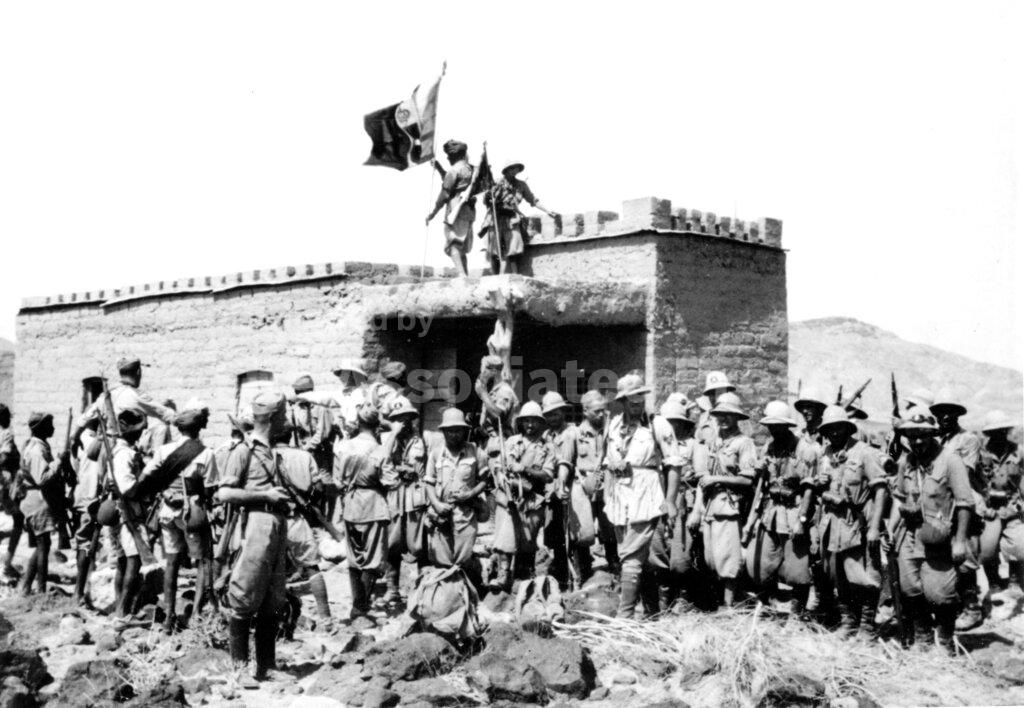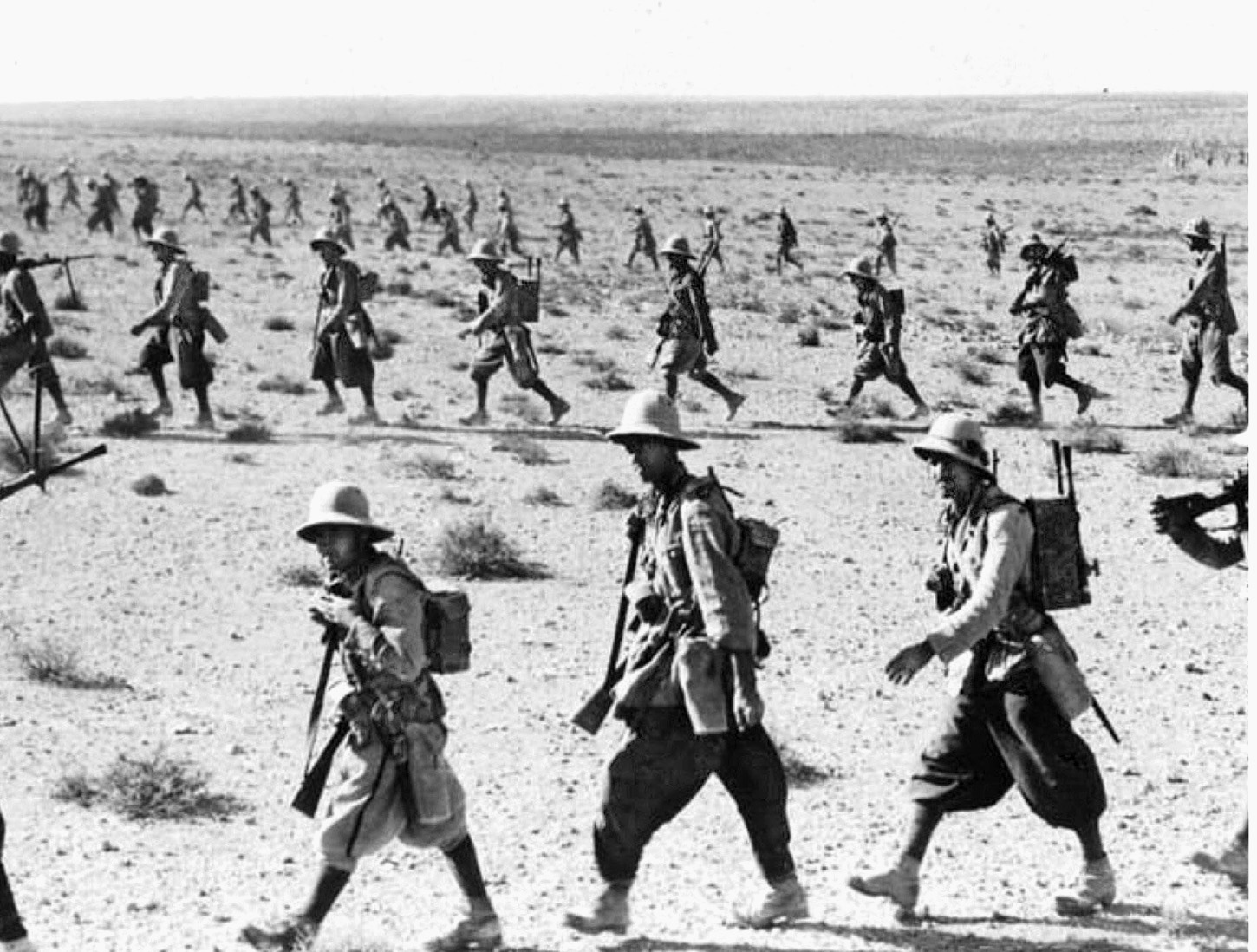
Sistar Light Machine Gun, 6.5 mm. The Operator Io Loading the Magazine.
A built-in oil pump on the left side Nof tli receiver sprayed a small jet of oil on the incotv ing rounds as each was positioned for chamber ing. This device was actuated by the reroi1n i counter-recoil movement of the barrel e> sion.The heavy machine gun had ident ical opera-ing parts, but most certainly did not resembi the lighter gun in anv other wav. Its cooling was o n / / O
bv air, but the barrel housing resembled rhe con- volitional water-cooled jacket. I .ong aluminum tubes grouped around the barrel were supposed to dissipate heat more efficiently. The 7.92-mm ammunition was fed to the weapon in a belt using push-out-type links, also originated and patented by the inventor of the gun. A clumsy looking handle with unprotected trigger was used on this heavy Sistar machine gun.
Both versions appeared only it) prototype form. While many of the principles have later been proved sound, especially the locking method, apparently nothing was ever done to develop either one. There is no record of any extensive test conducted either by the factory orthe government. Consequently, it had a very! short-lived competitive existence.
To fire the lightweight 6.5-mm gun, the operator first assumes the prone position and with his right hand releases the catch allowing the n o swinging magazine to pivot forward. This leaves version held 20 rounds, while the other utilized a semi-rigid metal belt holding 250 rounds wound on a drum.

The light machine gun, while having only a 20-sho! magazine, did have a feature that the company made great effort to demonstrate on every occasion. The gunner, without rising, could pivot the swinging magazine forward from the prone position and insert in a matter of seconds a fresh supply of loaded rounds directly from the cardboard container into the feed svs-. By this ease and speed in loading he could keep up practically uninterrupted fire.

The weapon was recoil operated, the barrel having an open jacket that gave it support and a bearing for “floating” the recoiling parts. The barrel return spring was housed inside this skeletonized jacket. A large charging and carrying handle was located on the left side considerably j forward of the usual placement of retracting assemblies. The trigger was placed underneath and slightly to the right. However, the customary guard, to protecL it from accidentally striking some object and discharging the piece unintentionally, was omitted. /

The recoiling pans were housed completely in a boxlike receiver on the top of which was a graduated sight. Air cooling was provided by circular fins machined along the barrel to give greater surface for heat radiation.  Italian Somali Divisions (101 and 102)
Italian Somali Divisions (101 and 102)

Juba Cemetery’s photo of British carbineers: at Gelib on the Juba river was fought a harsh battle between the Italian Somali Divisions and the British Army
The Italian Somali Divisions were two divisions of colonial soldiers from Italian Somaliland that were formed as part of the Regio Esercito (Italian Army) Royal Corps of Colonial Troops during the Second World War. In the Royal Corps of Colonial Troops, the units comprised the “101 Divisione Somala” and “102 Divisione Somala” and fought during the East African Campaign in 1941 before disbanding.
History
[edit]
After June 1940, when the Kingdom of Italy declared war on the Allies, two divisions of Somali soldiers were raised in Italian Somaliland. These were called the “101 Divisione Somala” and the “102 Divisione Somala”. The divisions’ initial personnel were drawn mainly from some of the colonial brigades that had fought in the conquest of Ethiopia in 1936 and British Somalia in 1940.
But soon after their formation, new recruits were enlisted in order to meet the numbers required for a standard Italian division (around 7,000 soldiers). These recruits received training by Italian NCOs, although this was interrupted in the early stages of the war by the construction of a small new decauville railway between Villabruzzi and the Ethiopian frontier.[1] As a result, at the start of World War II there were 20,458 Somali soldiers in Italian Somaliland, mostly in these two new divisions, but they were not well trained for combat.[2]
At the end of 1940, the 1st Somali Division, commanded by General Carnevali, was sent to defend the Juba river in western Italian Somaliland, in response to Italian concerns of a British attack from British Kenya. The 2nd Somali Division, commanded by General Santini, remained initially in the area of Mogadishu as a possible reserve force, before moving to the Gelib area in February 1941.[citation needed]

In the first days of February 1941 the British attacked the Juba front and after heavy fighting the 101 Divisione Somala, although reinforced by some units of the 102 Divisione Somala, was half destroyed. General Carlo De Simone, commander-in-chief of all Italian forces in Italian Somaliland, ordered the division’s retreat toward Ethiopia. General Baccari subsequently replaced Carnevali, after the latter was wounded in combat and became sick.[citation needed]
While in southern Ethiopia, the division was practically dismantled on March 7, when the few surviving brigades reached Harar in central Ethiopia.[4] Successively some of the 101 Somali Division’s Italian officers fought in the reduct of Gondar until November 1941.[citation needed]
The “102 Divisione Somala”, consisting mainly of new recruits who were not well trained for combat, retreated to Ethiopia after the British crossed the Juba river, following heavy clashes.

The soldiers of this colonial division fought hard around Gelib, rolling up the Juba river[5] but were forced to retreat by the better-equipped British force. The division was dismantled in the Ogaden area. Some of its soldiers – mainly the Italian officers – retreated to “Passo Marda” south of Addis Ababa where they made a last stand.[6] 